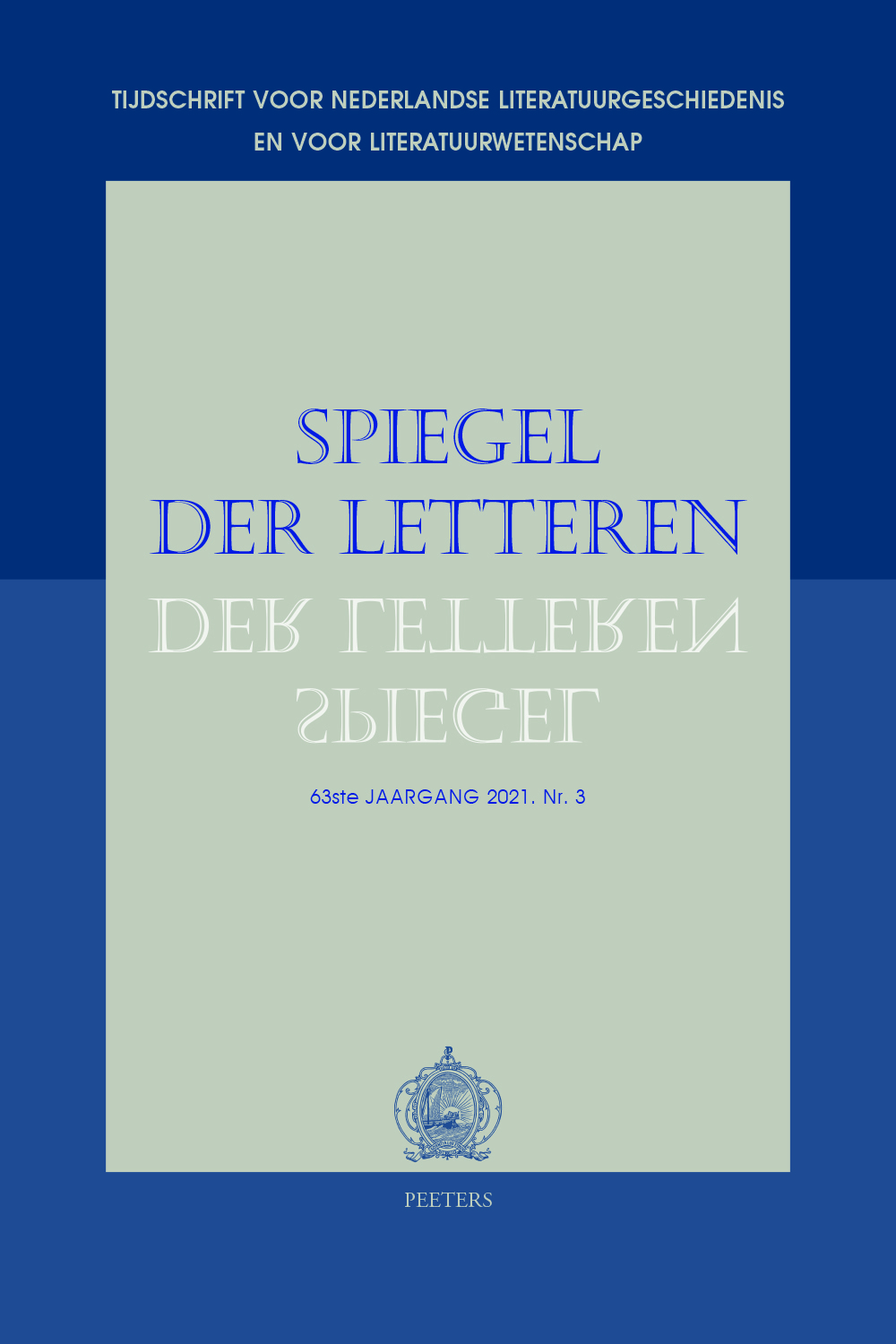 previous article in this issue previous article in this issue | next article in this issue  |

Preview first page |
Document Details : Title: Genre, sekse en gender Subtitle: De historische roman in de negentiende eeuw Author(s): STRENG, Toos Journal: Spiegel der Letteren Volume: 57 Issue: 3 Date: 2015 Pages: 291-322 DOI: 10.2143/SDL.57.3.3110506 Abstract : This paper examines whether and to what extent the concepts of sex (of the author) and gender (hierarchizing connotations of masculinity and femininity) are useful to describe the development of the historical novel in the Netherlands between 1790 and 1899. I discuss the prevailing view that low status jobs and feminization are mutually connected. It appears that, throughout the whole period, most historical novels were written by men. The supposed correlation does explain some developments, but only to a limited extent and time period: the trends between 1790 and 1875 where the total corpus of the novels translated from German are concerned. Remarkably, the weighted share of Dutch female writers was almost constant between 1835 and 1874, which can be explained by the status of Bosboom-Toussaint, who served as a role model for Dutch female novelists. The analysis based on birth cohorts of Dutch authors is a promising method for exploring the status of genres. After 1875, the correlation between status and gender proves to be true for a different aspect: the (supposed) public of the historical novel acquired feminine connotations. Finally, I assess whether female and male novelists of historical novels distinguish themselves by their choice of content matter and/or sex of the main character(s). |
|


